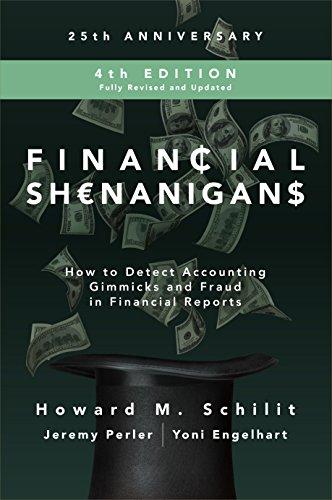

 Qno. 1,2, 3
Qno. 1,2, 3
1. (40 pts) Ratchets.com anticipates that it will need $ 15 million in venture capital to achieve a terminal value of $ 300 million in five years. A. (5 pts) Assuming it is a seed-stage firm with no existing investors, what annualized return is embedded in its anticipation? B. (15 pts) Suppose the founder wants to have a venture investor inject $ 15 million in three rounds of $ 5 million at times 0, 1, and 2 with a time 5 exit value of $ 300 million. If the founder anticipates returns of 70 percent, 50 percent and 30 percent for round 1, 2, and 3, respectively, what percent of ownership is sold during the first round? During the second round? During the third round? What is the founder's Year 5 ownership percentage? C. 9 pts) Assuming the founder will have 10,000 shares, how many shares will be issued in rounds 1, 2, and 3 (at times 0, 1, and 2)? D. (5 pts) What is the second-round share price derived from the answers in Part B and C? E. (6 pts) How does the answer to Part D change if 10 percent of total equity in Year 5 is set aside for incentive compensation? How many total shares are outstanding (including incentive shares) by Year 5? 2. (25 pts) Vail Venture Investors, LLC, is trying to decide how much percent equity ownership in Black Hawk Products, Inc., it will need in exchange for a $ 5 million investment. Vail Venture Investors has a target compound rate of return of 25 percent on venture investments like Black Hawk Products. Depending on the success of products currently under development, Vail Venture's investment in Black Hawk could turn out to be a complete failure (black hole), barely surviving (living dead), or wildly successful (venture utopia). Vail Venture assigns probabilities of 0.20, 0.50, and 0.30, respectively, to the three possible outcomes. Following are the three cash flow scenarios or outcomes for the Black Hawk Products investment that Vail Venture expects to exit at the end of five years. Outcome Year 1 Year 2 Year 3 Year 4 Year 5 Black hole 0 0 0 0 SO Living dead 0 0 0 0 $ 10 million Venture utopia | 0 0 0 0 S 50 million A. (6 pts) Calculate the present value of each scenario. B. (4 pts) Calculate the weighted average of present values for the three scenarios. What is the total equity value for the venture? C. (5 pts) Determine the acquired percentage of final ownership that Vail Venture Investors would need for its $5 million proposed investment. D. (10 pts) Now assume under the venture utopia scenario that, in addition to the $50 million cash inflow in Year 5, there will be an annual $ 1 million preferred dividend (to be paid to Vail Venture Investors but not other equity investors). Vail Venture expects to receive this $1 million dividend under the venture utopia scenario in each of the five years that the Black Hawk investment will be maintained. No preferred annual cash flows are expected under either the black- hole or the living-dead scenario. Calculate the acquired percentage of final ownership of Black Hawk Products that Vail Venture Investors would need to earn a 25 percent compound rate of return on its investment. 3. (35 pts) The Datametrix Corporation has been in operation for one full year (2013). Financial statements are shown below. Sales are expected to grow at a 30 percent annual rate for reach of the next three years (2014, 2015 and 2016) before settling down to a long-run growth rate of 7 percent annually. The cost of goods sold is expected to vary with sales. Operating expenses are expected to grow at 75 percent of the sales growth rate for the next three years before again growing at the same rate as sales beginning in 2017. Interest expense is expected to grow with sales. Depreciation can be forecasted either as a percentage of sales or as a percentage of net fixed assets (since net assets are expected to grow at the same rate as sales growth). Individual asset accounts are expected to grow at the same rate as sales. Accounts payable and accrued liabilities are also expected to grow with sales. Because Datametrix is in its startup stage, management and venture investors believe that 35 percent is an appropriate weighted average cost of capital (WACC) discount rate until the firm reaches its long-run or perpetuity growth rate. At that time, it will have survived, recapitalized its capital structure, and become a more typical firm in the industry with an estimated WACC of 18 percent. Calculate Datametrix's enterprise value as of the end of 2013. Also indicate what the equity would be worth. Income Statement for Dec 31, 2013 (thousands of dollars) Sales $ 20,000 Cost of goods sold - 10,000 Gross profit 10,000 Operating expenses -7,500 Depreciation -400 EBIT 2,100 Interest -100 Earnings before taxes 2,000 Taxes (40%) -800 Net income S1.200 Balance Sheet for Dec 31, 2013 (thousands of dollars) Cash $1,000 Accounts payable $ 1,500 Account receivable 2,000 Accrued liabilities 1.000 Inventories 2.000 Total current liabilities 2,500 Total current assets 5,000 Long-term debt 1,000 Gross fixed assets 5,400 Common stock 5,300 Accumulated depreciation 400 Retained earnings 1.200 Net fixed assets 5,000 Total equity 6,500 Total assets $10.000 Total liabilities and equity $10.000


 Qno. 1,2, 3
Qno. 1,2, 3





